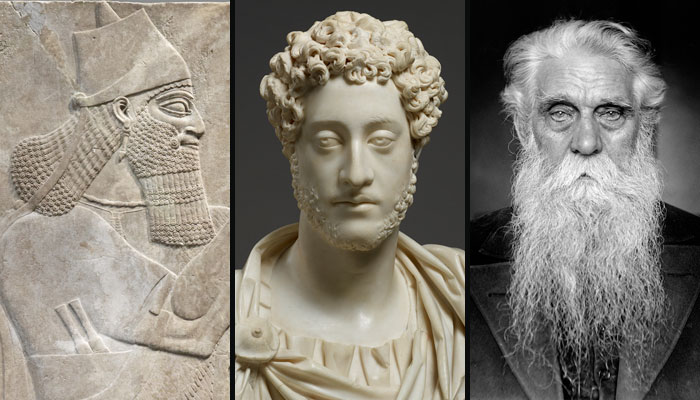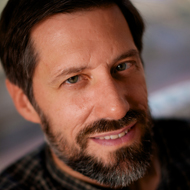
From left to right: Relief panel from the palace of the Assyrian king Ashurnasirpal II (detail), ca. 883–859 B.C., Assyrian. Gypsum alabaster. The Metropolitan Museum of Art, New York, gift of John D. Rockefeller Jr., 1932, Creative Commons CCO 1.0; Bust of Emperor Commodus (detail), A.D. 180–185, Roman. Marble. The J. Paul Getty Museum; The carpenter Karl August Andersson (detail), Stockholm, Sweden, 1834, photographer unknown. Print. Courtesy of the Swedish National Heritage Board.
The Meaning of Beards from Antiquity to Today
GETTY VILLA
Auditorium
This is a past event
Prepare for No-Shave November with an exploration of beards through time and cultures. Historian Christopher Oldstone-Moore presents the fascinating history of facial hair from the Assyrians onward, revealing how beards reflect male roles in society, express power and ideals of manliness, and serve to identify individuals and types of people. Beards are back; it's time to learn what they have been saying about men for 2,500 years! This talk will be preceded by a drop-in program re-creating the facial stylings of selected rulers and philosophers in the Villa's galleries.
C hristopher Oldstone-Moore is Senior Lecturer in History at Wright State University in Dayton, Ohio. He is the author of Of Beards and Men: The Revealing History of Facial Hair (University of Chicago Press). His research focuses on gender and masculinity, particularly the aspect of the hair and body.
hristopher Oldstone-Moore is Senior Lecturer in History at Wright State University in Dayton, Ohio. He is the author of Of Beards and Men: The Revealing History of Facial Hair (University of Chicago Press). His research focuses on gender and masculinity, particularly the aspect of the hair and body.